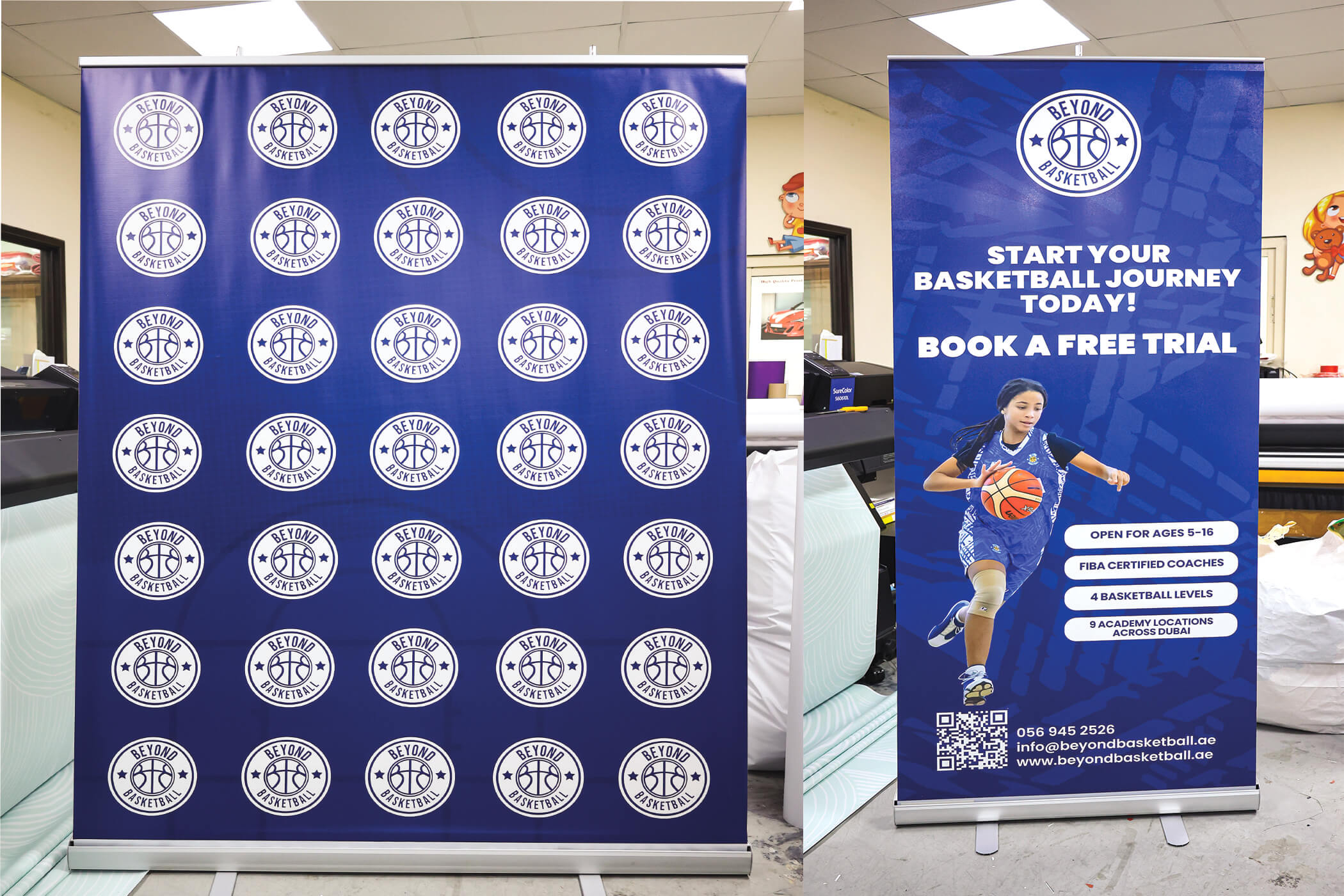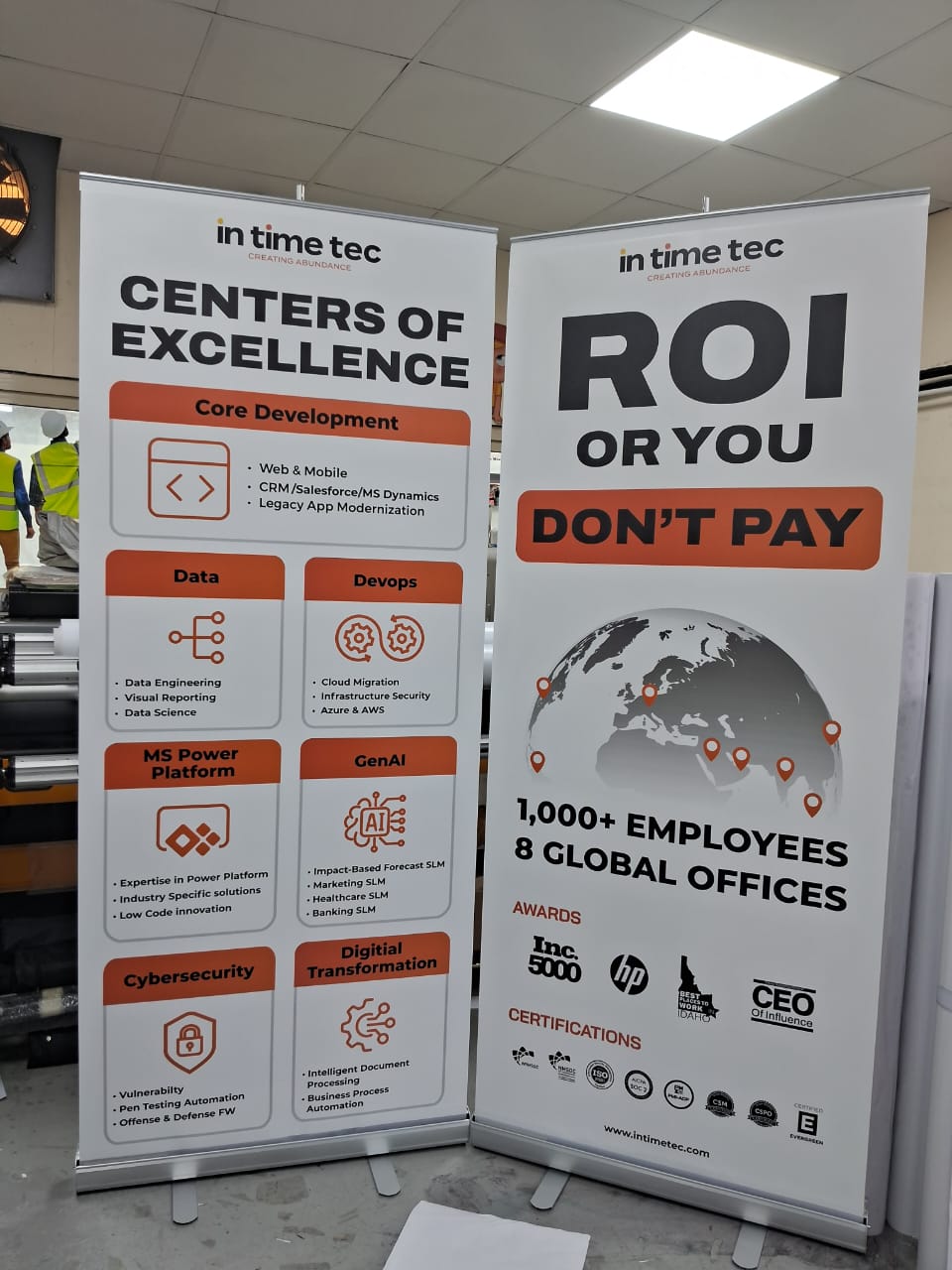
Digital Signage in Dubai
Digital signage refers to the use of digital displays, such as LED screens or projectors, to display multimedia content, including text, images, and videos. This technology has become increasingly popular in recent years, with businesses of all sizes adopting digital signage to communicate with customers, employees, and other stakeholders.
Digital signage offers a range of benefits for businesses. For example, it can increase visibility, enhance customer experience, reduce advertising costs, and boost sales and ROI. It can also improve internal communication and provide businesses with a platform for real-time updates and announcements. With these benefits, it’s no surprise that digital signage has become an essential tool for businesses across various industries.
Benefits of Digital Signage
One of the primary benefits of digital signage is its ability to increase visibility. Unlike traditional static signs, digital signage can display dynamic content that captures the attention of passersby and draws them in.
The bright, vivid displays and moving images on digital signage are much more likely to grab attention and create an impression in the minds of customers. Additionally, digital signage can be strategically placed in high-traffic areas, such as busy streets, shopping centers, and airports, to maximize exposure and ensure that businesses are seen by as many people as possible.
Many businesses have benefited from increased visibility through the use of digital signage. For example, a restaurant can use digital signage to display its menu outside, attracting customers walking by and making it easier for them to see the restaurant’s offerings.
How Digital Signage Can Improve The Customer Experience
A clothing store can use digital signage to display its latest fashion items and promotions, creating a visual display that draws customers in and encourages them to browse the store. A healthcare facility can use digital signage to provide directions to visitors, making it easier for them to navigate the complex facility.
Studies have shown that visibility is a critical factor in the success of businesses. According to research, businesses that are visible and easily accessible are more likely to attract customers and generate revenue.
In fact, one study found that over 60% of consumers are more likely to visit a business that has a visible sign, while another study found that over 30% of customers would not have found a business if it hadn’t been for its sign. These statistics demonstrate the importance of visibility in attracting customers and generating revenue for businesses.
By offering interesting and educational material that adds value to the customer’s visit, digital signage may significantly improve the customer experience. Businesses can showcase their goods and services, offer useful information, and build an immersive environment using digital signs, all of which improve the overall consumer experience. For instance, a retail business can utilize digital signage to show videos of its items in use or to offer product details and reviews, enhancing the consumer experience and making it more interesting. Similarly to this, a hotel can utilize digital signs to advise visitors about nearby sights and events, enhancing and personalizing their stay.
Digital signage has been successfully used by many companies to improve customer experience. As an illustration, a bank can use digital signage to inform customers about its goods and services, cutting down on wait times and enhancing the overall customer experience. The use of digital signage in theme parks can help visitors plan their days more efficiently by giving them up-to-the-minute information on ride wait times. With the help of digital signage, a hospital can inform patients and visitors about vital health and wellness information while also improving the environment.
Customer satisfaction has been linked to business success, according to research. One study found that more than 80% of consumers are willing to pay more for a better customer experience, and another found that companies that place a high priority on the customer experience outperform their rivals by as much as 80%. These figures show how crucial the customer experience is to a company’s ability to generate revenue, customer loyalty, and repeat business. By providing interesting and engaging content that adds value to the customer’s visit, digital signage can assist businesses in improving the customer experience.
Cost-Effective Advertising
In a number of ways, digital signage can lower the cost of advertising. First off, it does away with the need for printed materials like billboards, posters, and flyers, which can be expensive to make and replace. Additionally, remote editing and updating of digital signage is simple, eliminating the need for pricey reprinting and physical distribution of materials. Second, digital signage can be more precisely and efficiently used to reach a target audience than conventional advertising techniques, giving businesses a competitive advantage. Additionally, digital signage can be more interactive and engaging than conventional forms of advertising, enabling companies to convey a message that is more powerful and memorable.
Many businesses have saved money on advertising using digital signage, including
- Retailers: Digital signage can be used to promote sales, discounts, and new products, allowing retailers to reach customers with timely and relevant information without the need for printed materials.
- Restaurants: Digital menu boards can be used to update menu items, prices, and specials in real-time, reducing the need for printed menus and streamlining the ordering process.
- Banks: Digital signage can be used to provide customers with up-to-date information about interest rates, loan options, and other financial services, reducing the need for printed brochures and pamphlets.
- Healthcare providers: Digital signage can be used to display important health information, appointment reminders, and other relevant information to patients, reducing the need for printed materials and improving patient communication.
Digital signs can boost sales and return on investment (ROI) in several ways
Attractive: Digital signage is more likely to get people’s attention than traditional static signage because it stands out. Digital signage can get potential customers’ attention and get them to take action by showing them videos, animations, and pictures.
Improved customer experience: Customers can have a better experience with digital signage because it shows them useful information, such as where to go, details about products, and sales. Digital signs can help build customer loyalty, repeat business, and good word-of-mouth marketing by making the customer experience better.
Dynamic content: Digital signage makes it easy and quick for businesses to change their messages, so they can respond to things like sales events, new product launches, or seasonal promotions.
Targeted advertising: With digital signage, businesses can get their ads in front of specific groups of people. By making sure their ads are relevant to different groups of people, businesses can make their ads more effective and increase the chance that viewers will become customers.
Many businesses have successfully used digital signage to increase sales and ROI. Here are a few examples:
- McDonald’s: The fast-food giant installed digital menu boards in over 14,000 of its US locations. The new menu boards increased sales by up to 3%, according to McDonald’s CEO.
- Best Buy: The consumer electronics retailer saw a 9% sales lift after installing digital signage in its stores. The signage allowed customers to interact with products and access product information, resulting in increased engagement and sales.
- Westfield: The global shopping center operator uses digital signage to promote its retailers and display targeted advertising. By providing relevant information and offers to customers, Westfield has increased sales and foot traffic in its shopping centers.
Improved Internal Communication
Digital signage is a modern and effective tool for enhancing internal business communication. Important information, updates, announcements, and news can be displayed in a visually appealing and engaging manner. Businesses can create a more dynamic and interactive communication channel that reaches employees in real-time by utilizing digital signage. With information readily accessible to all employees at all times, digital signage can also contribute to a more effective and organized workplace. Digital signage is an excellent tool for enhancing internal communication within a business, given its ability to convey messages quickly and effectively.
Numerous businesses have utilized digital signage to improve internal communication with great success. Google, for instance, uses digital signage to display information about upcoming events, company news, and important updates in its offices. Additionally, Coca-Cola has implemented digital signage in its offices to improve employee communication. The organization utilizes digital signage to display real-time updates regarding production, quality control, and other crucial metrics. Another example is Marriott, which employs digital signage to display crucial hotel operations data, such as occupancy rates and staffing levels.
Overview of emerging trends in digital signage technology
In the industry of digital signage, interactive displays are gaining popularity. This technology permits users to interact with the display, resulting in a more engaging and individualized experience.
Utilizing artificial intelligence (AI) to analyze customer data and generate personalized content. Digital signage powered by AI can display advertisements based on a user’s demographics, location, and browsing history.
Augmented reality (AR): Immersive experiences are being created by integrating AR technology into digital signage. Customers can interact with the display and view products in real-time.
The Internet of Things (IoT) is being incorporated into digital signage in order to enable real-time communication between the display and other devices. This permits personalized communication and dynamic content.
Management in the cloud: Management in the cloud enables remote management and updates of digital signage content. This technology also provides analytics in real-time for monitoring the efficacy of campaigns.
The future of digital signage is bright, with emerging trends such as interactive displays, AI-powered content, AR technology, IoT integration, and cloud-based management. These technologies will improve customer engagement, enhance targeting, better data collection, and provide remote management. As these technologies continue to evolve, businesses that adopt them will have a competitive advantage in the market.



